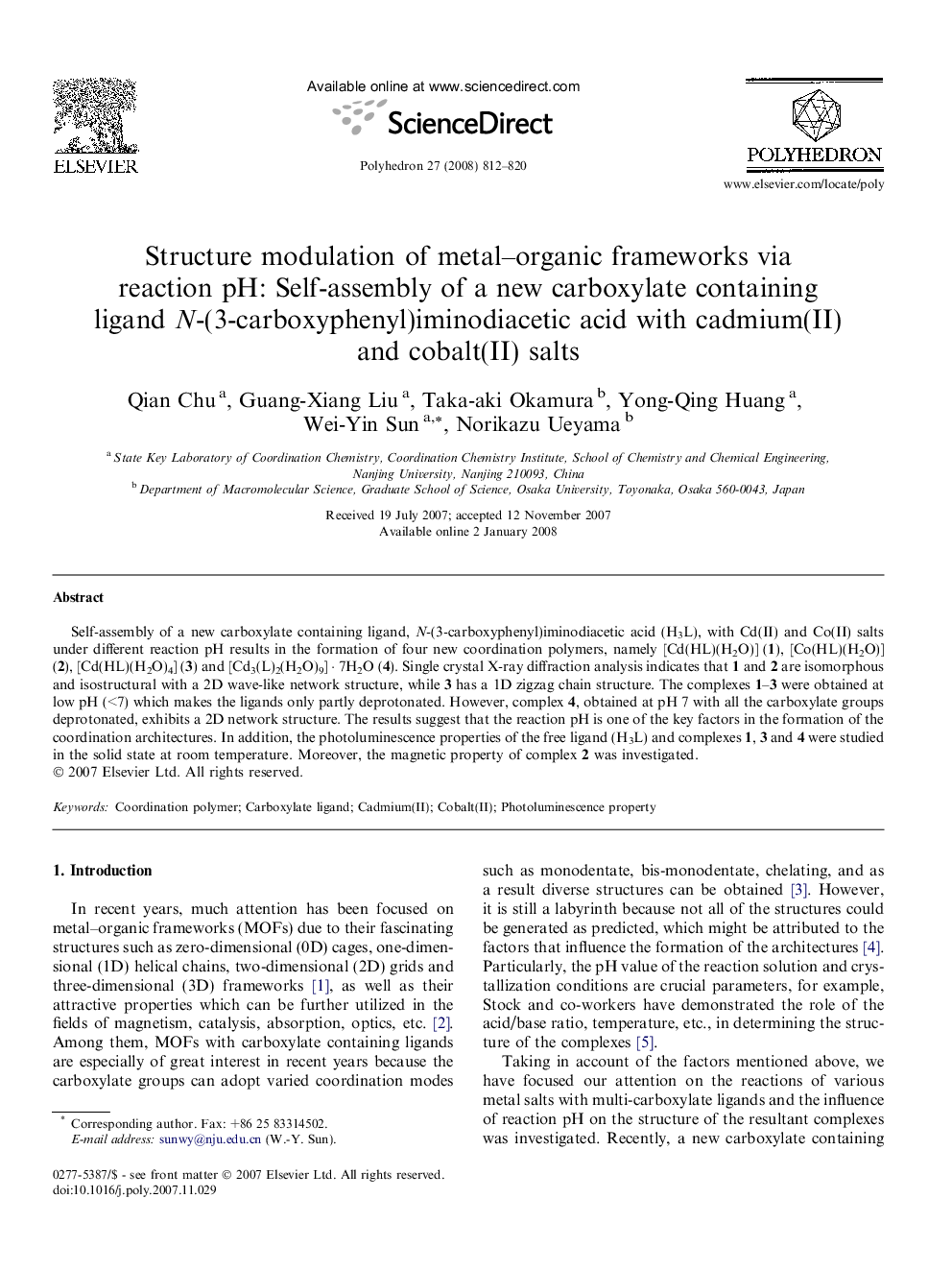| Article ID | Journal | Published Year | Pages | File Type |
|---|---|---|---|---|
| 1339666 | Polyhedron | 2008 | 9 Pages |
Self-assembly of a new carboxylate containing ligand, N-(3-carboxyphenyl)iminodiacetic acid (H3L), with Cd(II) and Co(II) salts under different reaction pH results in the formation of four new coordination polymers, namely [Cd(HL)(H2O)] (1), [Co(HL)(H2O)] (2), [Cd(HL)(H2O)4] (3) and [Cd3(L)2(H2O)9] · 7H2O (4). Single crystal X-ray diffraction analysis indicates that 1 and 2 are isomorphous and isostructural with a 2D wave-like network structure, while 3 has a 1D zigzag chain structure. The complexes 1–3 were obtained at low pH (<7) which makes the ligands only partly deprotonated. However, complex 4, obtained at pH 7 with all the carboxylate groups deprotonated, exhibits a 2D network structure. The results suggest that the reaction pH is one of the key factors in the formation of the coordination architectures. In addition, the photoluminescence properties of the free ligand (H3L) and complexes 1, 3 and 4 were studied in the solid state at room temperature. Moreover, the magnetic property of complex 2 was investigated.
Graphical abstractNew coordination frameworks were obtained by the reaction of a new carboxylate containing ligand, N-(3-carboxyphenyl)iminodiacetic acid (H3L), with Cd(II) and Co(II) salts under different reaction pH, and their structures were determined by single crystal X-ray diffraction studies. The influence of the reaction pH on the structure of the complexes was discussed. The photoluminescence properties of the Cd(II) complexes were also investigated.Figure optionsDownload full-size imageDownload as PowerPoint slide
